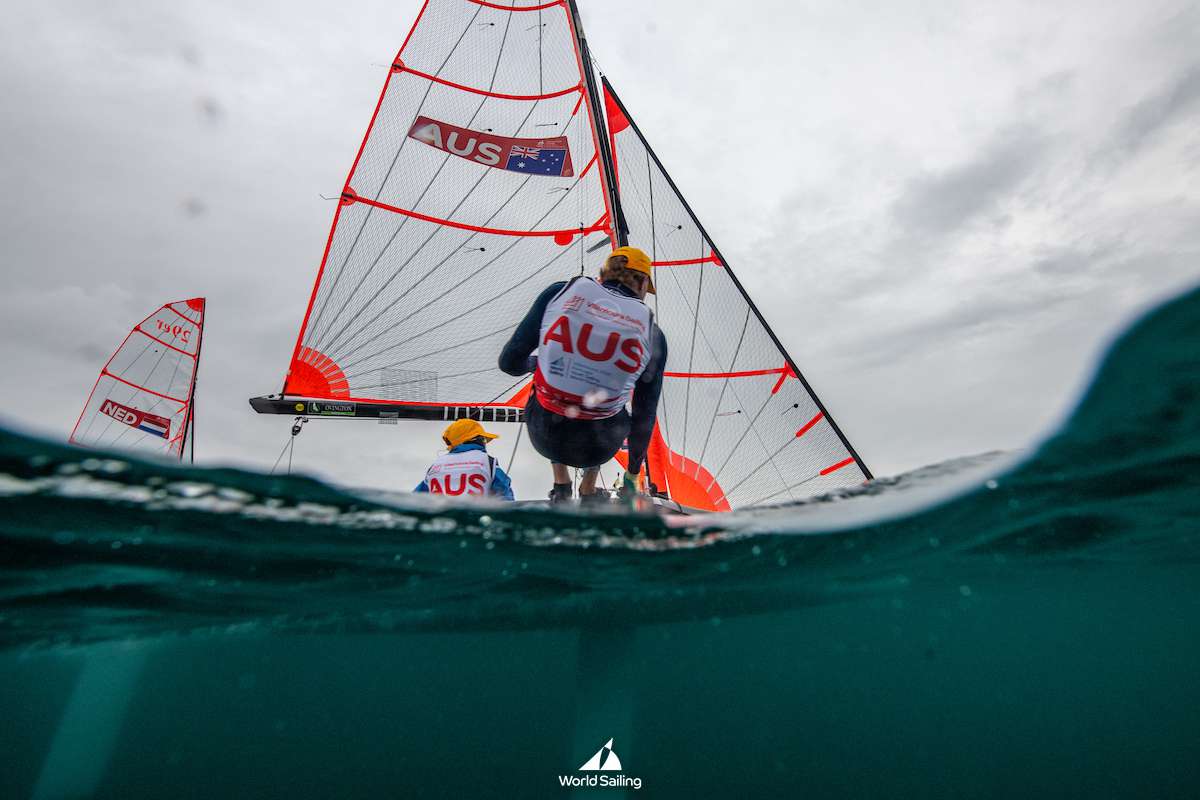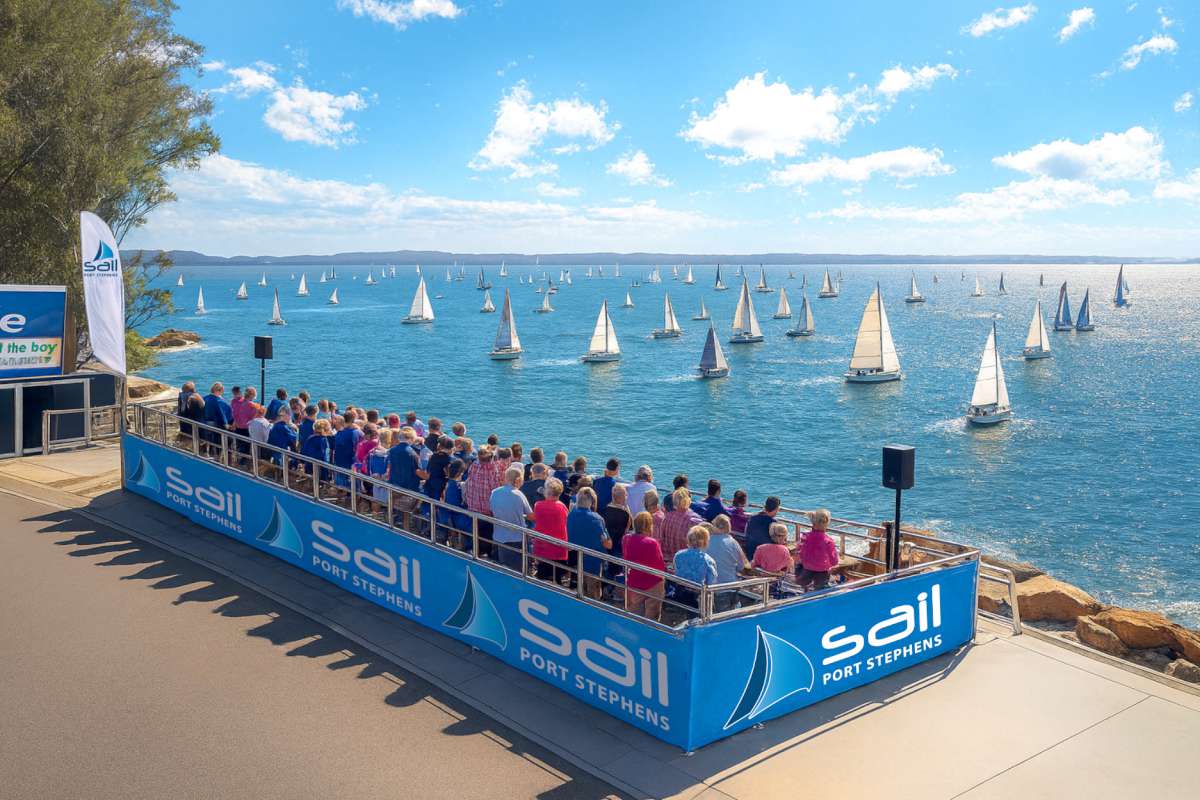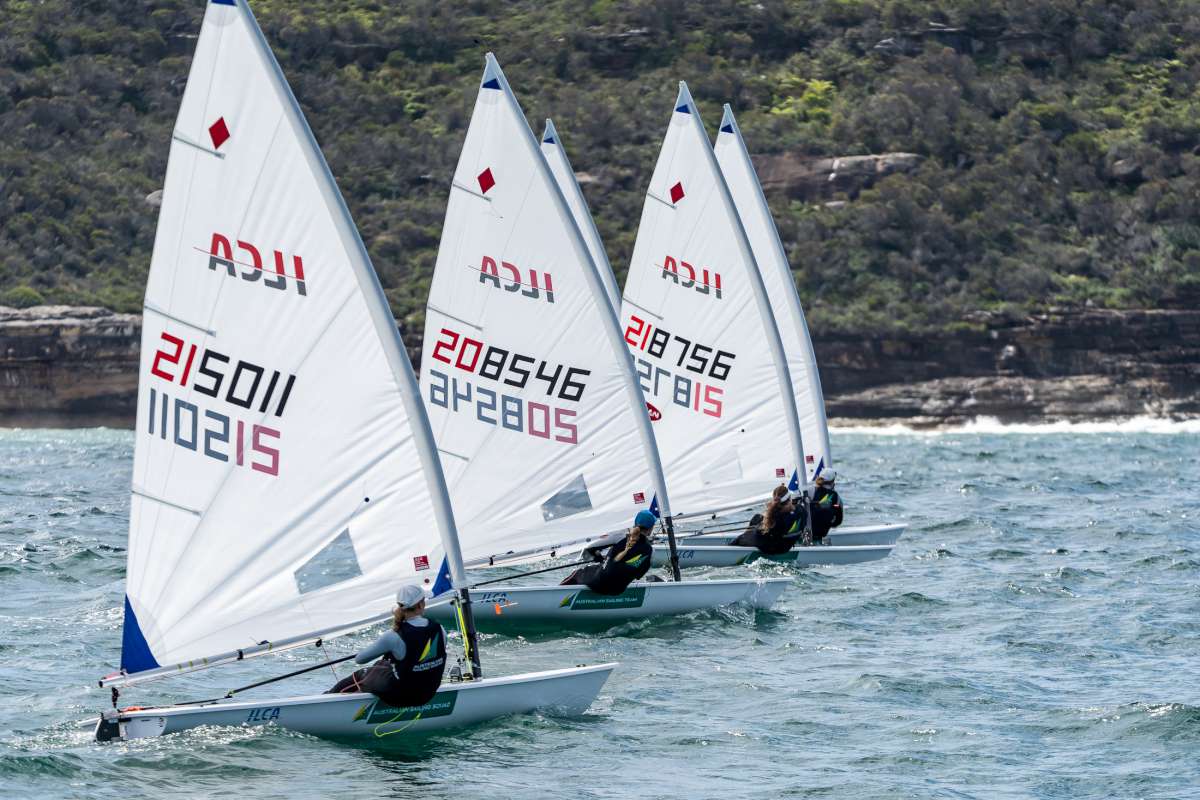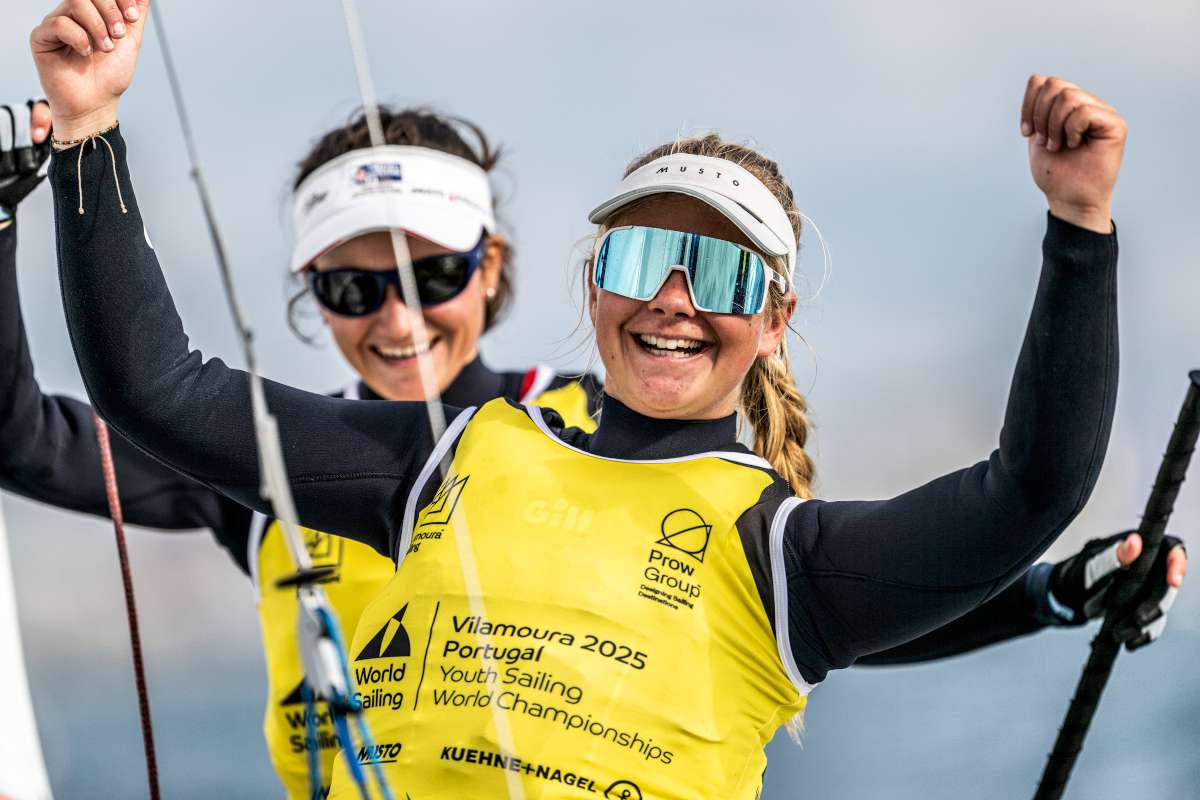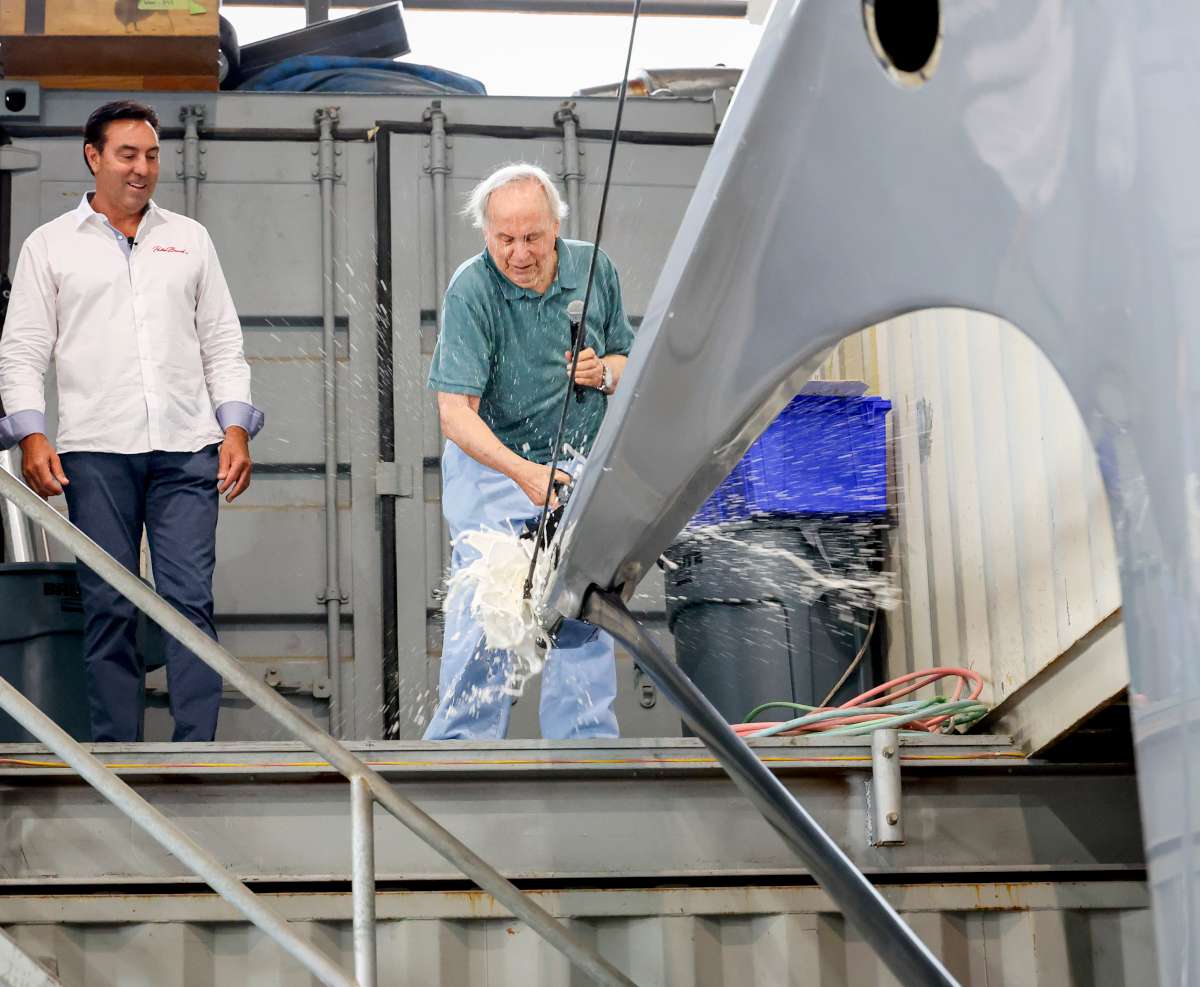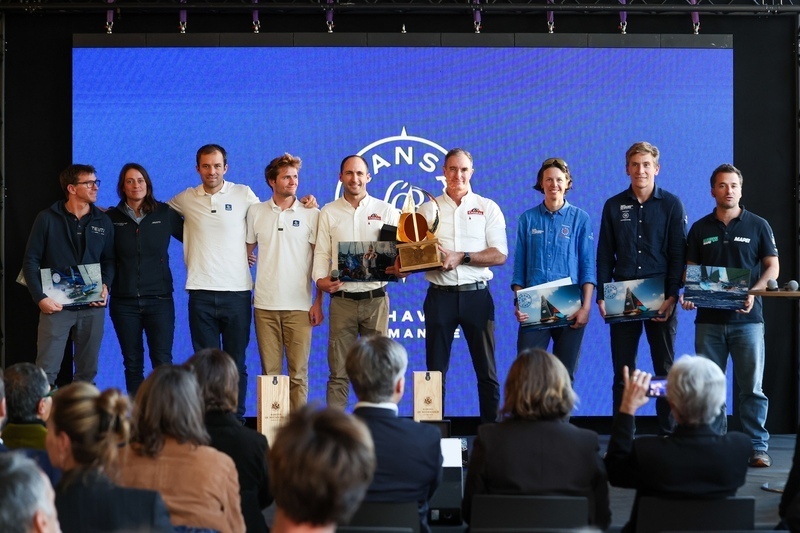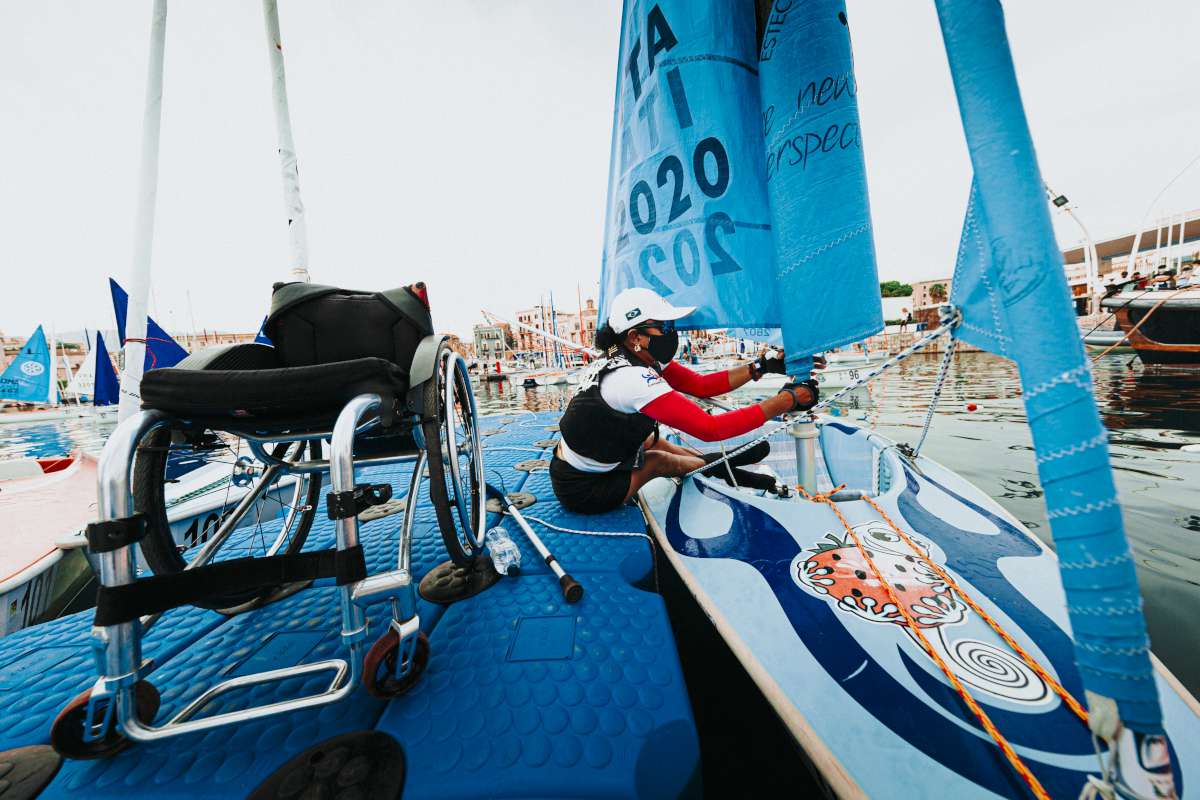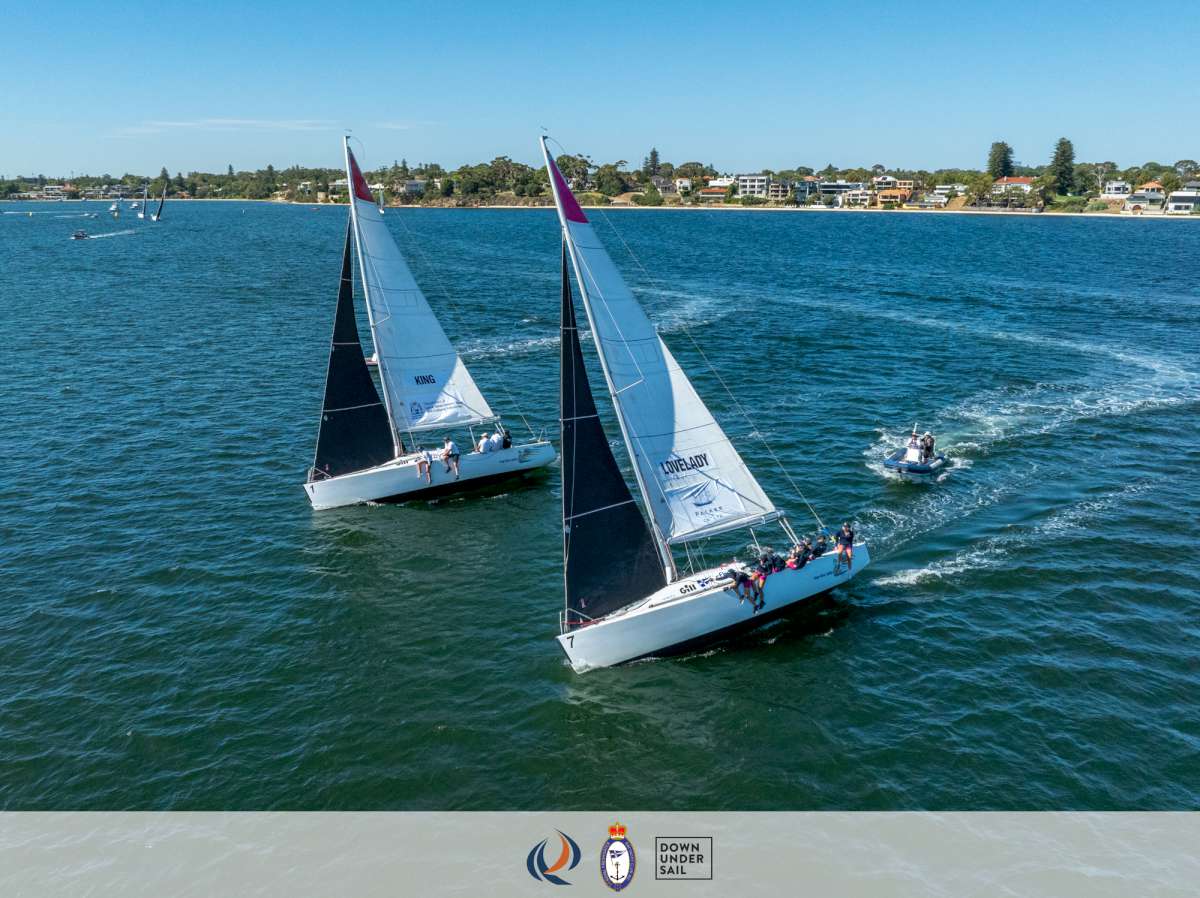Awarded best mid-size cruiser for 2015, following on from the big sister 38 which won European Yacht of the year, the Oceanis 35 is a continuation of the formula.
Our September 2014 review of the Oceanis 38 was titled ‘Transformer’ as a simple explainer on how the modular design of the Oceanis series works: take a hull shape and make it open plan so owners can configure the interior to their needs and wants. But then go one step further and make the interior interchangeable as those needs and wants change over time. A simple idea, does the Beneteau Oceanis 35 succeed?
Primarily aiming to attract the younger set that wish to take up sailing, the Oceanis 35 is a good size boat with good deck layout to make inexperienced or short handed sailors take to the water.
By aiming for young couples, the Oceanis recognises this group matures and changes. From wanting to daysail, to maybe venturing offshore, to including a growing family and even getting out on the race track. The modular layout is designed to cater and accommodate all those variables and more. Plus it includes a few design modifications that are clever in their own right.
It all centres around the arch
The cabin top arch changes everything, not just by removing mainsheet tackle from the cockpit.
Without a traveller on the cabin top the companionway hatch is nearly twice as long as a standard one. This brings several benefits: shallower angled steps into the cabin; full head height when coming up to the cockpit; longer windowed hatch for extra light and ventilation. All without sacrificing cockpit or cabin space.
The arch also provides a boom strut to keep the boom from hitting heads and is a solid handhold getting out of the cockpit onto the deck.
The main sheeting system is one that is gaining fast approval on cruising boats with its twin block sheeting. It provides a safety factor if caught in an all-standing gybe, as well as a redundancy factor if one sheet should break.
As a final use the arch allows clear sight lines for the skipper as well as providing a sturdy base for a bimini and dodger.
The hull shape follows the same philosophy coming from all Finot-Conq designs: full hull chine for stability and hull volume; beam max. attained halfway along the hull; hull width at transom over 80 per cent of beam max.
First striking point is the cockpit: it is massive. I am over six foot and while laying outstretched laterally on a cockpit bench, with my head resting on a high and nicely-angled coaming, my feet were reaching the foot braces at the cockpit centreline under the saloon table. It is rated as the largest cockpit for a boat of its size. The cockpit is truly ‘party central’.
So now you have the beginnings of a good daysailing weekender or even a racing cockpit with plenty of room for guests and racing crew. The twin wheels add to the feeling of space and make easy access to the aft fold down swim platform. Split backstay enhances that accessibility.
Two winches either side of the companionway take care of all the halyards which run aft from the mast, keeping close to the centreline leaving side decks flush and clear. Sheet winches are well aft just forward of the twin wheels. This suits for cruising, allowing the skipper to run a watch single handed.
The steering stations are positioned well for viewing, either standing or sitting on the fold away transom seats. The small binnacle posts have all the necessary instrumentation.
Very happy to see the engine controls on the inboard side of the port post. This is a welcome change from so many boats that have it placed at your ankles, dangerous and annoying.
It is also reachable while steering from both wheels. Hatches underfoot hold plenty of gear including life raft storage.
Good to see a double anchor roller up forward leading back to the windlass sunk into the anchor locker. The jib furler sits in between the two.
Under the starboard cockpit bench is an enormous lazarette that sits behind the shower unit down below. This can become a fore and aft double berth if desired, our test boat opted for the two cabin Cruiser model.
Gaining what I can from the drawings, the 35 has quite a different hull form to the bigger 38. Both appear to have quite deep, nicely rounded canoe bodies; but where the 38 forefoot angled back quite quickly, the 35 appears to be plumb from the waterline before curving down to the keel. The hull depth is held well aft of the keel before angling up to the stern waterline. The bow sections are also well-rounded to counter the buoyancy of the flat aft chined sections.
We did not have much breeze, hovering just over the six knots. So with the sails cranked on we pointed to where it felt most comfortable, which was five knots with apparent wind angle at 42 degrees off the bow. This was better than what the supplied velocity prediction program claimed, so it performs in light air.
The steering, provided by twin rudders, is exceptional: direct, true and responsive. It would be good to take this out in a big swell with its optional asymmetrical headsail tacked onto the stem and see how well controlled it would react.
You can read in the specifications box the design criteria Cruising Helmsman uses in determining a boat’s performance.
According to the VPPs supplied, the lowest true wind speed this boat reaches theoretical hull speed is 12 knots at 80° true wind angle. This compares quite favourably to other yachts we have tested in this size range. It would appear that hull chine adds well to boat speed at the same time as enhancing interior hull volume.
So lets check out down below.
Welcome home
The afore-mentioned gentle sloping companionway steps (60° as opposed to the usual 45°) lead you into a bright and spacious place.
There are five interior choices: the Daysailer single cabin; the Weekender two or three cabins and the Cruiser two or three cabins. While the Weekender and Cruiser can be converted to suit an owners changing preferences the Daysailer remains static.
The major differences between the Daysailer and the Cruiser is the size of the galley and the ability to close off the Cruiser’s forecabin with a full, double door bulkhead.
Our test boat was a Cruiser two cabin without the forward bulkhead in place. As you come down the steps, therefore, the full size of the boat is open to you and it is an amazing sight. This is under 10.5 metres remember.
The forward cabin, with its two metre double, includes a generous hanging locker and even a small seat for dressing. There is a large pull-out drawer under the bed.
Just aft of the bulkhead to starboard runs the galley and to port is the four seater saloon with removable table.
Swivelling around at the aft end of the saloon puts you at the aft facing navigation station.
I like full length galleys. While they may not have the bench space the usual L-shape provides, you can brace your self against the saloon table for better security while cooking. The ubiquituous two-burner stove and a single sink, given the type of sailing this boat is designed for, makes this galley more than adequate.
Its cupboard storage has soft-close doors which is a bit odd as you still have to wait to lock them for safety.
Aft of the galley is the enclosed head forward of the separate enclosed shower unit, while on the port side, aft of the navigation table, is a full length hanging locker right alongside the companionway steps, a winner in my books.
Aft of that is the entry to the aft cabin.
The two cabin version as tested allows the separation of the head from the shower, another welcome feature.
The aft cabin in this version runs athwartships and is plenty huge enough. Standing at the bed head it has 186 centimetres of head room.
The three cabin design fits in two fore and aft double beds in private cabins, this requires the removal of the separate shower unit and puts it back in with the head. In either version the elbow room for both showering, or reading Cruising Helmsman on the head, is suitable enough for a 35 footer.
As is the norm, there are plenty of hatches, portholes and lighting throughout the cabin.
Engine will cruise at 2600rpm doing 5.8kts with top speed just on theoretical hull speed from over 3700rpm. Cruising speed will give you 250 nautical miles from the 15kW Yanmar.
Engine access is tight from the front but good sized hatches in the port and starboard sides provide access to all the necessary filters etc.
The 15kW Yanmar is one of the stock standards nowadays delivering good speeds and economy. There is space for extra batteries if you run a lot of electrical gear.
Under the floorboards the keel bolts to the hull with six bolts on separate washers. Beneteau are offering three keel versions to ensure a broad market access. A deep keel at 1.85m, the 1.45m shoal keel, or a 1.14m centreboard.
What’s the wash up
While the exterior design of this boat is pretty rad, looking at the specifications its displacement to length ratio is still comfortably in the light cruiser/racer range like most boats nowadays. Same goes for the sail area to displacement.
Given the variations available over the lifetime of this series of yachts, the options and accessories packages are extensive.
The Daysailer model is more restricted than the other two models and this is reflected in its price.
The standard sail plan is the 102 per cent genoa and the mainsail. While the headsail has roller furling as standard, the mainsail has optional mast furling.
Optional sails are an asymmetrical spinnaker and a self-tacking staysail.
Most boats sell with added options packages available but Beneteau have taken the idea to the next level with the Oceanis series.
As an owner’s situation and needs change over the years they can call up the local agent and discuss what can be done to the interior to make the 35 suit the change in lifestyle.
One to suit the restlessness in us all.
Phillip Ross







